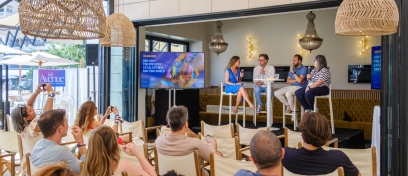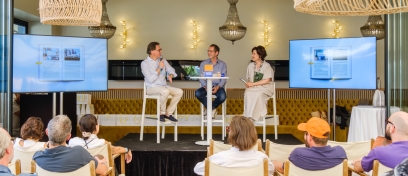OOH and the omnichannel purchase journey: creating meaningful connections with consumers
Convenience and cost-consciousness: behind the growth of e-commerce
The way we live, behave and communicate is evolving. The spread of digital connectivity, bringing people together at the tap of a button, is making the world a smaller place. Over half of the world’s population are internet users, of whom 71% use social media, exchanging a total of 60 billion messages daily through apps like Facebook’s WhatsApp or Messenger.

Both as a direct cause and effect of our increased connectivity, the global retail landscape is undergoing a paradigm shift: it’s estimated that e-commerce will account for 36% of global retail by 2022, driving 53% of growthin the sector.
So what’s driving this move towards online retail? A global study by KPMG highlights the main reasons why consumers across the world are choosing online shopping over physical stores. Shoppers are motivated mainly by functional and practical factors, such as the ability to compare prices and grab a bargain; or the increased convenience and time savings that 24/7 shopping offers. This indicates a demand for an efficient shopping journey, successfully fulfilled by the convenience of ordering goods at the click of a button.

Omnichannel retail: combining experiences and convenience
However, while online shopping may satisfy practical consumer needs more efficiently, it doesn’t usually engage consumers on an emotional level in the same way that physical shopping experiences can.Consumers increasingly see experiences as the key to personal fulfilment and happiness, as opposed to material goods. This global trend has been called the ‘experience economy’. Perhaps as a reaction to the rise of e-commerce, this tendency appears to extend to retail preferences – according to PwC, most consumers want more human interactions while shopping in future, not less.
This plays to offline retailers’ benefit: compared with their e-commerce counterparts, brick-and-mortar stores can offer more immersive, interactive and engaging consumer experiences, creating more emotionally engaged brand interactions.
And seeing an item in person still matters to many people. Despite the convenience of online shopping, consumers still value and prefer ‘real life’ experiences like being able to touch and feel the products, especially for high-value goods.

These two competing demands – more convenience alongside more meaningful experiences – mean that the distinction between online and offline retail is set to become less clear. A study by the Harvard Business Review shows that 73% of global consumers use multiple channels during their shopping journey as they switch back and forth between online and offline to inform their decision-making process.
A range of retailers are responding to this trend. Digital-first brands still see the value of brick-and-mortar retail. Amazon bought Whole Foods for around $14 billion, including its nearly 500 physical locations and Alibaba frequently invests in retail chains as part of its offline growth strategy.
Conversely, major retailers that have traditionally been store-based have developed an online presence that is increasingly important to the consumer experience. In addition to their well-established websites, both Waitrose and Tesco have built mobile apps that enable consumers to purchase online, browse products and collect loyalty points.
Both online and offline retailers are starting to offer an omnichannel shopping journey, a channel-agnostic approach that is customer-centred and offers the same shopper experience in any way they purchase.
OOH helps brands build meaningful experiences with consumers
This demand for experiences as well as convenience should also apply to advertising. Today, consumers have access to more varied touchpoints and more information than ever before, so brands need to develop a fluid, omnichannel communications strategy to reach consumers.Despite this, some brands focus more on short-term activation media on online and mobile channels according to The Brand Gap, rather than traditionally brand-building channels like out-of-home (OOH).
This has limited effectiveness. As shown on the graph below, global consumers, overwhelmed by the amount of online adverts they see, are increasingly installing ad-blockers. Indeed, Kantar Milward Brown found that 71% of US internet users believe ads are more intrusive now than they were three years ago.

Furthermore, real-life creative and engaging experiential campaigns allow audiences not only to observe but interact and build relationships with brands in real life. For example, to help Paco Rabanne launch a new fragrance, JCDecaux built a sensory experience at CDG Airport in Paris. The fragrance discovery began through taste by sampling Pure XS-branded vanilla-flavoured popcorn, a key ingredient of the scent. Memorable impressions created through interactions like this allow brands to get closer to consumers.

As retail increasingly becomes an omnichannel experience, the brand-building qualities of OOH as an interactive, digitally-integrated physical channel are clear. Aside from OOH’s experience value, it amplifies and boosts online and search effects, proving a perfect complement to online sales activations.



